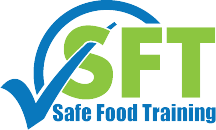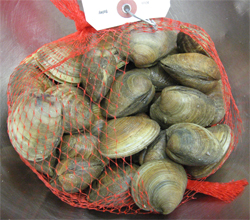ServSafe MN Tips for Live Shellfish Safety
The ocean waters are getting colder, and that ushers in the prime season for live mussels from Penn Cove, Washington, North Atlantic clams, or fresh Virginia oysters. The import of live and fresh shellfish can bring up ServSafe MN questions such as how to keep shellfish alive and how to store these seasonal catches.
In the case of clams and mussels, the best time to cook them is when they are still alive. We recommend that they be cooked, processed or sold within a day or two of their arrival. This will ensure incredible quality and freshness as well as reduce foodborne illness. The first thing that we recommend that you do upon receiving your fresh shellfish is to inspect them. If there is a pungent odor to them or you see several open shells, there are inevitably dead clams, mussels or oysters in your shipment. The second thing we recommend is that you rinse shellfish under cold, running water. As you do this, be aware that live shellfish will drown if kept under unmoving water.
Once you have rinsed them, ignore your instincts to clean your shellfish, especially mussels. Many times you will see plant life attached to mussels. This plant life can be attached to the membrane which holds the shell shut. Removing it will may damage and kill your mussels. We suggest that you wait to clean shellfish until just before processing.
Shellfish must be stored under refrigeration. They should be stored in a perforated pan and covered with ice. Make sure that you place your perforated pan in a deep enough container to accommodate for ice melt. Remember that live shellfish will die if submerged.
You should also periodically check your shellfish. A good sign of a dead clam is an open clam while all the other clams are shut firmly. Remove dead shellfish as soon as possible to prevent contamination.
Allergy Concerns
With live shellfish it is always recommended that you keep in mind that many people can have severe allergic reactions to the smallest contact. In order to prevent cross contamination with non-seafood items, store your shellfish as far away as possible from other foods, and never above or below other raw meats. A good suggestion would be to store shellfish on a bottom shelf under packaged foods.
Safe Food Training is a qualified provider of ServSafe MN training and exams; however, our regularly scheduled courses are sourced by NRFSP. Both ServSave and NRFSP exams are accepted by Minnesota Department of Health, Environmental Services for Food Manager Certification in MN. Click this link for more information on ServSafe MN.



